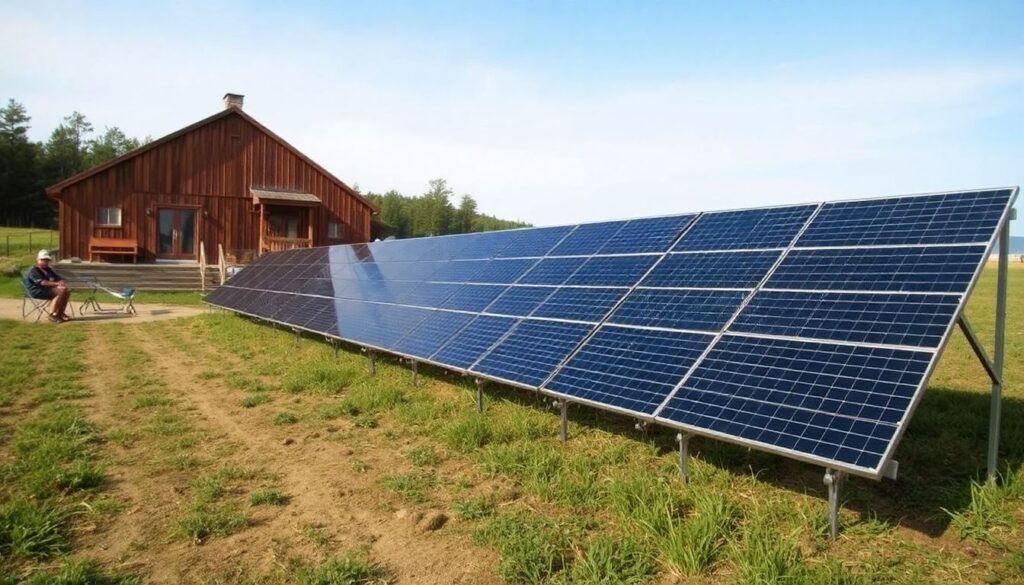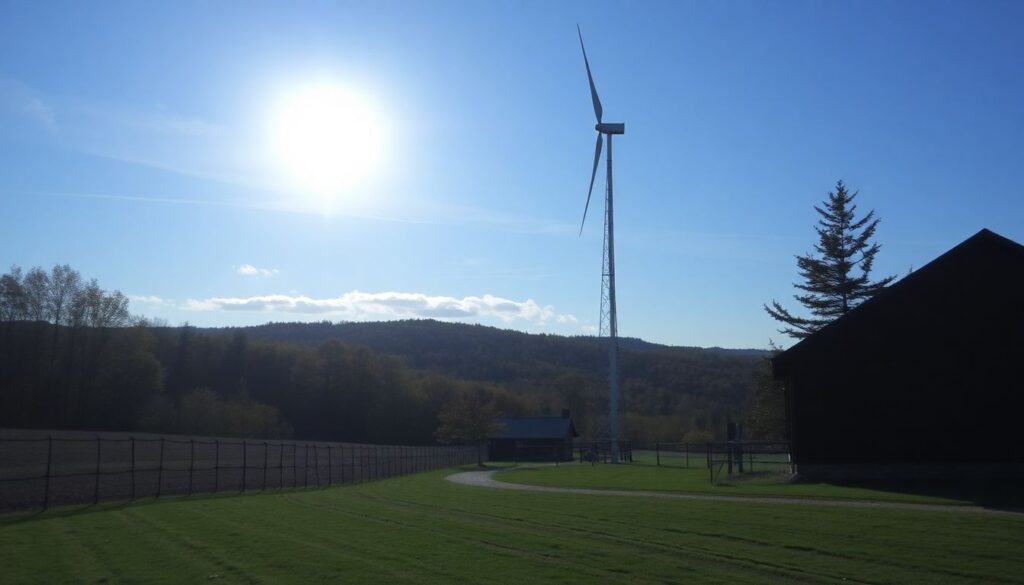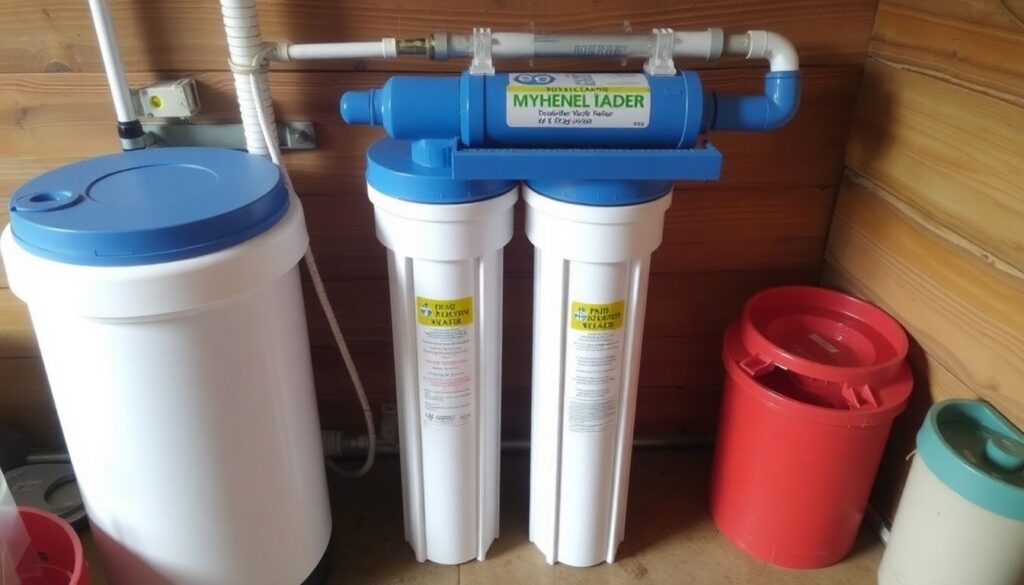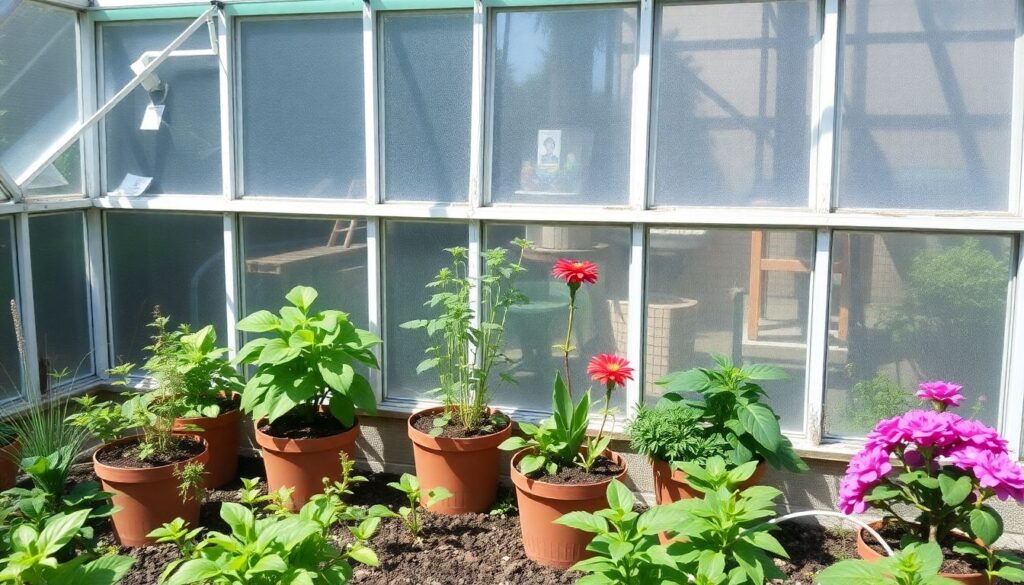The Smart Homesteader is a fresh and simple way to share information about the latest products and time tested ideas we can all use to accomplish an easier and smarter way to consider living off grid. Homesteading and living off grid is an extremely rewarding pursuit that we all have in us and the ability to do.

The posts on The Smart Homesteader may contain affiliate links. If you click on one and make a purchase, I may make a commission at no extra cost to you and also helps fund the website. Rest assured I only recommend products or services I believe will provide value to my readers.
Smart Solutions for Modern Off-Grid Living: A Comprehensive Guide
The Evolution of Off-Grid Living
Off-grid living has transformed dramatically from it’s humble beginnings in simple cabin life and back-to-the-land movements. Today’s off-grid setups blend traditional self-sufficiency skills with cutting-edge technology, creating homes that rival or surpass conventional grid-tied properties in comfort and efficiency.
Modern off-grid enthusiasts aren’t just surviving – they’re thriving with sophisticated systems that provide all the amenities of modern life while maintaining independence from public utilities. This shift represents a growing movement towards sustainable, self-reliant living that doesn’t sacrifice quality of life.
Energy Independence: The Foundation of Off-Grid Living
The cornerstone of any successful off-grid system is energy production and management. The days of relying solely on noisy generators or living by candlelight are long gone.
Today’s off-grid energy solutions are diverse, effective, and increasingly affordable, allowing for a lifestyle that’s both comfortable and environmentally conscious.

Solar Power: Harnessing the Sun’s Energy
Solar technology has seen remarkable advancements in recent years. Modern photovoltaic panels now boast efficiency ratings often exceeding 20%, which translates to more power generation from a smaller footprint.
This increased efficiency makes solar a viable option for a wider range of locations and climates.
Thin-film solar technologies are pushing the boundaries of where and how we can combine solar power into our lives. These flexible, lightweight panels can be incorporated into building materials, vehicles, and even clothing, opening up new possibilities for energy generation.
For those looking to maximize their solar potential, tracking systems can significantly boost energy production. These systems adjust the angle of solar panels throughout the day to follow the sun’s path, increasing energy yield by up to 30% compared to fixed installations.
Wind Power: Capturing the Breeze

Modern wind turbines designed for residential use have come a long way in terms of efficiency and noise reduction. Vertical axis wind turbines (VAWTs) are particularly well-suited for areas with variable wind directions, making them an excellent complement to solar systems in many off-grid setups.
New blade designs and materials have increased the power output of small-scale wind turbines while reducing their visual and auditory impact. Some models can now start generating electricity at wind speeds as low as 2 mph, making them viable in a broader range of locations.
Micro-Hydro: The Steady Stream of Power

For properties with flowing water, micro-hydro systems offer a consistent power source that can operate 24/7. Recent innovations in low-head systems have made it possible to generate electricity from even small streams with minimal elevation change, expanding the potential for hydro power in off-grid setups.
Modern micro-hydro systems are designed with environmental considerations in mind, incorporating fish-friendly turbines and minimal impact installation methods. These systems can provide a reliable baseline of power generation, reducing the need for battery storage in some cases.
Energy Storage: The Game Changer for Off-Grid Independence
The ability to store energy efficiently is what truly enables off-grid independence. Battery technology has made significant strides in recent years, with several options now available for off-grid enthusiasts.
Advanced Battery Systems
Lithium iron phosphate (LiFePO4) batteries have become the gold standard for off-grid applications. These batteries offer longer lifespans, deeper discharge capabilities, and faster charging times compared to traditional lead-acid batteries.
With proper care, a LiFePO4 battery bank can last 10-15 years or more, making them a cost-effective long-term investment for off-grid systems.
Many new battery systems now include built-in inverters and energy management systems, simplifying installation and operation. These all-in-one units can watch power production, storage levels, and consumption in real-time, automatically adjusting to optimize system performance.
Flow Batteries: The Future of Long-Term Storage
For those looking to the horizon of energy storage technology, flow batteries represent an exciting development. These systems can store large amounts of energy and have the potential for nearly unlimited cycling, making them ideal for seasonal energy storage.
Flow batteries work by storing energy in liquid electrolytes, which can be easily replaced to “recharge” the battery. This unique design allows for very large storage capacities and long lifespans, potentially solving the challenge of long-term energy storage for off-grid systems.
Water Management: The Lifeblood of Off-Grid Systems
Water is crucial for any homestead, and smart off-grid solutions are making water management more effective and sustainable than ever. From collection to purification and reuse, modern systems are closing the loop on water usage.
Rainwater Harvesting: Making the Most of Precipitation

Advanced filtration systems now allow rainwater to be safely used for all household needs, including drinking water. Smart controllers can watch water levels and quality, automatically switching between sources as needed to confirm a constant supply of clean water.
New materials and designs for rainwater collection surfaces are increasing the efficiency of harvesting systems. Some coatings can increase water yield by up to 10% by reducing surface tension and allowing more water to flow into collection systems.
Greywater Recycling: Maximizing Water Efficiency
Innovative greywater systems can now treat and repurpose water from sinks, showers, and washing machines for irrigation or toilet flushing. Some systems even mix with home automation, optimizing water use based on household patterns and garden needs.
Advanced biological and mechanical filtration techniques allow greywater to be purified to near-potable standards, greatly expanding it’s potential uses. Some systems can even recover heat from greywater, improving overall energy efficiency in the home.
Atmospheric Water Generators: Water from Thin Air
In areas where water is scarce, atmospheric water generators can extract moisture from the air, providing a reliable water source even in arid climates. These devices are becoming more energy-efficient, making them viable options for off-grid use.
Recent advancements in materials science have led to the development of passive atmospheric water harvesting systems. These use specially designed surfaces to condense water from the air without requiring external energy input, potentially changing water access in dry regions.
Sustainable Agriculture: Growing Self-Sufficiency
Off-grid living often goes hand-in-hand with food production. Smart solutions are making it easier to grow food year-round, even in challenging environments.
Aquaponics: The Symbiotic Solution
Aquaponic systems mix fish farming with hydroponic plant growth in a closed-loop system. New designs incorporate IoT sensors to watch water quality, automate feeding, and alert owners to potential issues.
This level of automation makes it possible to maintain a thriving aquaponic system with minimal daily input.
Advanced lighting systems designed specifically for aquaponics can mimic natural light cycles and spectrums, optimizing both plant growth and fish health. Some systems even adjust light intensity and color based on the growth stage of plants, maximizing yields and efficiency.
Vertical Farming: Maximizing Space and Resources

Vertical farming techniques allow for high-yield food production in limited spaces. LED grow lights specifically tuned to plant needs can dramatically increase efficiency, while automated nutrient delivery systems confirm optimal growth with minimal input.
New modular vertical farming systems make it easy to start small and expand as needed. These systems can be easily integrated into existing structures, turning unused spaces into productive growing areas.
Smart Greenhouses: Extending the Growing Season

Climate-controlled greenhouses with automated ventilation, heating, and irrigation systems can create ideal growing conditions year-round. Some advanced systems even use machine learning to forecast and prevent pest infestations. Clearly the one pictured above is a traditional green house.
Transparent solar panels are now being developed that can be used as greenhouse coverings, generating electricity while allowing light through for plant growth. This technology could make greenhouses energy-neutral or even net-positive in terms of power consumption.
Energy-Efficient Appliances: Comfort Without Compromise
Living off-grid doesn’t mean giving up modern conveniences. Today’s energy-efficient appliances are designed with off-grid living in mind, offering high performance with low power consumption.
DC Appliances: Cutting Out the Middleman
Many appliances now come in DC versions, eliminating the need for power-hungry inverters. From refrigerators to washing machines, these appliances can run directly off battery banks, increasing overall system efficiency.
Some manufacturers are now producing “smart” DC appliances that can talk with energy management systems, adjusting their power consumption based on available energy. This level of integration helps to balance loads and maximize the use of renewable energy sources.
Induction Cooking: The Future of Off-Grid Kitchens
Induction cooktops offer precise temperature control and high efficiency, making them ideal for off-grid kitchens. When paired with solar or battery power, they provide a clean, safe cooking option that doesn’t rely on propane or wood.
New portable induction cooktops are particularly well-suited for off-grid living, offering flexibility in kitchen layout and the ability to cook outdoors when weather allows. Some models can even be powered directly from portable solar panels, making them perfect for outdoor cooking or emergency situations.
Smart Home Technology: Automation for Optimization
The Internet of Things (IoT) has reached the off-grid world, bringing with it unprecedented levels of control and efficiency. Smart home technology allows off-grid dwellers to watch and manage their systems with ease, optimizing resource use and improving overall quality of life.
Energy Management Systems: The Brain of the Off-Grid Home
Advanced energy management systems can watch power production, storage levels, and consumption in real-time. These systems can prioritize loads, schedule energy-intensive tasks for peak production times, and even learn from usage patterns to improve efficiency.
Machine learning algorithms are now being incorporated into energy management systems, allowing them to forecast energy production and consumption based on weather forecasts and historical data. This predictive capability enables better load balancing and can help prevent system overloads or energy shortages.
Remote Monitoring: Peace of Mind from Afar
Cloud-connected monitoring systems allow off-grid homeowners to keep an eye on their systems from anywhere in the world. This can be particularly useful for detecting issues early or managing seasonal properties.
Some remote monitoring systems now incorporate AI-powered anomaly detection, which can identify potential problems before they become serious. This proactive approach to system maintenance can save time, money, and resources in the long run.
Waste Management: Closing the Loop
Effective waste management is crucial for truly sustainable off-grid living. New technologies are making it easier to turn waste into resources, reducing environmental impact and increasing self-sufficiency.
Composting Toilets: Beyond the Basics
Modern composting toilets are odorless, effective, and can even produce safe, usable compost. Some advanced models use minimal water and can handle high-capacity use, making them suitable for full-time family living.
New designs incorporate heating elements and mechanical agitators to speed up the composting process and confirm finish pathogen elimination. Some models even separate liquid and solid waste, allowing for more effective processing and nutrient recovery.
Biogas Digesters: Turning Waste into Energy
Small-scale biogas digesters can turn organic waste into cooking fuel and fertilizer. New designs are more compact and effective, making them practical for individual homesteads.
Advanced biogas systems now incorporate pre-treatment processes that can break down tough organic materials like lignin, increasing gas production and expanding the range of waste materials that can be processed. Some systems even capture and purify the CO2 produced during digestion, which can be used in greenhouses to boost plant growth.
Construction Techniques: Building for Efficiency
The way we build off-grid homes has a significant impact on their long-term sustainability and efficiency. New construction techniques and materials are making it possible to create homes that are more energy-efficient, durable, and environmentally friendly than ever before.
3D Printed Homes: Rapid, Sustainable Construction
3D printing technology is being adapted for home construction, offering the potential for rapid, low-cost building with minimal waste. These homes can be designed for optimal energy efficiency and can incorporate cavities for insulation or utilities.
Recent advancements in 3D printing materials have led to the development of printable concrete mixtures that incorporate recycled materials and industrial byproducts, reducing the environmental impact of construction. Some of these mixtures even have self-healing properties, potentially increasing the lifespan of 3D printed structures.
Phase Change Materials: Passive Temperature Control
Innovative building materials that change phase at specific temperatures can help regulate indoor temperatures passively. When incorporated into walls or ceilings, these materials can significantly reduce heating and cooling needs.
New microencapsulation techniques are making it possible to incorporate phase change materials into a wider range of building products, from drywall to insulation. This allows for more flexible integration of passive temperature control into both new construction and retrofits.
The Future of Off-Grid Living
As technology continues to advance, the possibilities for off-grid living expand. From artificial intelligence optimizing energy use to new materials that generate electricity from temperature differentials, the future of off-grid living is bright and full of potential.
Emerging technologies like perovskite solar cells promise to dramatically increase the efficiency and decrease the cost of solar power generation. These new cells can be printed on flexible substrates, potentially allowing for solar panels to be integrated into a wide range of surfaces and materials.
Advancements in energy harvesting technologies are opening up new possibilities for powering small devices and sensors. Thermoelectric generators that can produce electricity from body heat, and piezoelectric materials that generate power from movement, could lead to self-powered smart home devices that need no external energy input.
The key to successful off-grid living comes from integrating these smart solutions into a cohesive system that works for your specific needs and environment. By embracing these innovations, off-grid living can offer not just independence and sustainability, but a level of comfort and convenience that rivals or surpasses conventional homes.
People Also Asked
What is the best solar panel for off-grid living?
The best solar panel for off-grid living depends on your specific needs and location. However, monocrystalline panels are generally considered the most effective for residential use, with brands like SunPower, LG, and Panasonic consistently receiving high ratings. Below is an actual solar farm, so we don’t need to go to these extremes to supply our individual homes.

How much does it cost to set up an off-grid power system?
The cost of setting up an off-grid power system can vary widely depending on your energy needs and location. A basic system might start around $15,000, while more comprehensive setups can cost $30,000 or more.
Factors like battery storage capacity and the size of your solar array will significantly impact the overall cost.
Can you run a refrigerator off-grid?
Yes, you can run a refrigerator off-grid. Many energy-efficient models are designed specifically for off-grid use, running on DC power directly from batteries.
Proper sizing of your solar array and battery bank is crucial to confirm consistent power for essential appliances like refrigerators.
What are the most effective off-grid water systems?
The most effective off-grid water systems often mix many sources and technologies. A combination of rainwater harvesting, well water (if available), and water recycling systems tends to provide the most reliable and sustainable water supply for off-grid homes.
How do off-grid homes handle waste?
Off-grid homes handle waste through various methods, including composting toilets, septic systems, and biogas digesters. The choice depends on local regulations, climate, and personal preferences.
Many off-grid homeowners aim to turn waste into a resource through composting or energy production.
What are the best batteries for off-grid solar systems?
Lithium iron phosphate (LiFePO4) batteries are now considered the best option for most off-grid solar systems because of their long lifespan, deep discharge capability, and safety profile. Brands like Battle Born and RELiON are popular among off-grid enthusiasts.
Can you live comfortably off-grid?
Yes, with proper planning and investment in effective systems, you can live very comfortably off-grid. Modern off-grid homes can have all the amenities of grid-tied houses, including high-speed internet, air conditioning, and modern appliances.
What is the most effective heating system for off-grid homes?
The most effective heating system for off-grid homes often depends on climate and available resources. In many cases, a combination of passive solar design, high-efficiency wood stoves, and heat pumps powered by renewable energy provides the best balance of efficiency and comfort.
How do off-grid homes get internet access?
Off-grid homes can get internet access through various means, including satellite internet, cellular data networks, and point-to-point wireless systems. Starlink, a satellite internet service by SpaceX, is becoming increasingly popular among off-grid dwellers because of it’s high speeds and global coverage.
What are the legal requirements for living off-grid?
Legal requirements for living off-grid vary widely depending on location. Common considerations include building codes, zoning laws, water rights, and waste management regulations.
It’s crucial to research local laws and get necessary permits before setting up an off-grid homestead.
Key Takeaways:
- Modern off-grid living combines traditional self-sufficiency skills with cutting-edge technology.
- Advances in renewable energy and storage are making energy independence more achievable and affordable.
- Smart water management systems are crucial for sustainable off-grid living, incorporating rainwater harvesting and recycling technologies.
- Sustainable agriculture techniques allow for year-round food production, even in challenging environments.
- Energy-efficient appliances and smart home technology significantly improve resource use in off-grid setups.
- Innovative construction techniques and materials are making off-grid homes more effective and sustainable.
- The future of off-grid living looks bright, with emerging technologies promising even greater efficiency and self-sufficiency.